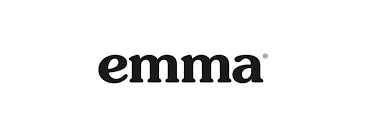Welcome to the world of email marketing, where the art of connecting with your audience through well-crafted emails can make all the difference. In today’s digital landscape, email marketing remains a powerful tool for businesses to engage, nurture, and convert leads into loyal customers. Two notable players in the email marketing arena are Emma and Sendloop. In this comprehensive comparison, we’ll dive deep into these two platforms, dissecting their features, ease of use, pricing, and more. Our goal is to help you make an informed decision and determine which is the best email marketing tool for your unique needs.
| Emma Email Marketing Tool | Sendloop |
|---|---|
 |  |
| G2 Score – 4.0 out of 5 stars | G2 Score – 4.4 out of 5 stars |
| TrustRadius Score – 8.6/10 | TrustRadius Score – N/A |
User-Friendly Interface
A user-friendly interface can significantly impact your experience with an email marketing tool. Let’s begin by evaluating how Emma and Sendloop stack up in terms of ease of use and accessibility.
Emma’s User-Friendly Interface
Emma prides itself on providing an intuitive and user-friendly interface. Whether you’re a seasoned email marketer or just starting, Emma’s dashboard is designed to be straightforward and easy to navigate. The menu options are clear, and the user-friendly drag-and-drop email editor makes creating emails a breeze.
One of Emma’s standout features is its customizable email templates. These templates come in various styles and designs, helping you create visually appealing emails that match your brand’s identity. The flexibility of these templates saves you valuable time and effort when crafting engaging email campaigns.
Sendloop’s User-Friendly Interface
Sendloop also places a strong emphasis on user-friendliness. Its dashboard is clean and uncluttered, ensuring that users of all experience levels can navigate it effortlessly. Sendloop’s email editor is designed for simplicity, allowing you to create and edit emails with minimal effort.
While Sendloop may not offer the same level of template customization options as Emma, it excels in simplicity and efficiency. The email editor is straightforward and user-friendly, making it easy to design emails even if you’re not a design expert.
Email Campaign Management
Email campaign management is the core functionality that drives your email marketing efforts. It encompasses various aspects, from creating and automating campaigns to analyzing their performance and optimizing for better results.
Emma’s Email Campaign Management
Emma provides a comprehensive set of tools for managing your email campaigns. One of its standout features is list segmentation, a powerful tool that allows you to finely target specific groups of subscribers based on various criteria. This segmentation capability empowers you to send highly personalized and relevant content to different segments of your audience, boosting engagement and conversion rates.
Automation is another area where Emma excels. The platform offers automated email workflows that can be triggered by specific user actions or events. For instance, you can set up workflows to automatically welcome new subscribers, nurture leads, or re-engage inactive customers. This automation not only saves you time but also ensures that your audience receives timely and tailored communications.
When it comes to tracking and analyzing your email campaigns, Emma offers detailed reporting and analytics. You can access insights into critical metrics like open rates, click-through rates, conversion rates, and more. These analytics provide valuable feedback that helps you assess the effectiveness of your campaigns and make data-driven decisions to improve your email marketing strategy. Emma also supports A/B testing, allowing you to experiment with different email elements to determine what resonates best with your audience.
Sendloop’s Email Campaign Management
Sendloop provides essential email campaign management features with a focus on simplicity and efficiency. While it may not offer the same depth of features as Emma, it caters to users who value straightforward and hassle-free email marketing.
List management in Sendloop is intuitive, allowing you to import and organize your subscribers with ease. While it may not provide advanced segmentation options on the same level as Emma, it covers the basics to help you organize your audience effectively.
Automation in Sendloop is available through basic automated email sequences. While these sequences may not be as complex as Emma’s workflows, they serve well for automating routine email communications.
In terms of analytics, Sendloop provides essential metrics such as open rates and click-through rates. While it may lack some of the advanced reporting features of Emma, it offers valuable insights to gauge the performance of your email campaigns.
Pricing and Customer Support
Understanding the cost and level of customer support offered by an email marketing tool is crucial for making an informed decision. Let’s take a closer look at how Emma and Sendloop handle pricing and customer support.
Emma
- Pricing is typically tiered based on features and list size:
- Pro Plan: Offers automation, segmentation, and analytics. Pricing usually starts at around $89/month.
- Plus Plan: Includes additional features like landing pages and A/B testing. Pricing is higher and usually requires a quote from Emma.
- Enterprise Plan: Custom pricing for advanced needs like custom integrations and dedicated support.
Sendloop
- Sendloop focuses on simplicity and ease of use in email marketing.
- Pay-As-You-Go Plan: Ideal for infrequent senders, with no monthly fees. You buy email credits as needed; for instance, 1,000 email credits cost approximately $10.
- Monthly Subscription Plans: Starting from around $9/month for up to 500 subscribers, with unlimited email sends. Pricing increases with the number of subscribers.
Emma’s Pricing
Emma employs a tiered pricing model based on the number of subscribers in your email list and the features you need. This approach ensures that businesses of all sizes can find a suitable plan tailored to their specific requirements and budget constraints.
For smaller businesses and startups, Emma offers competitive rates, making it accessible even to those with limited marketing budgets. As your subscriber list grows, the pricing scales accordingly. This scalability allows businesses to start with a cost-effective plan and upgrade as they expand their email marketing efforts.
One significant advantage of Emma’s pricing structure is its transparency. Users can easily calculate their costs using Emma’s pricing calculator, eliminating any surprises or hidden fees. Furthermore, Emma extends a generous 20% discount to nonprofit organizations, demonstrating its commitment to supporting socially impactful initiatives.
Sendloop’s Pricing
Sendloop offers a pricing model designed to be budget-friendly and straightforward. It operates on a tiered subscription model based on the number of contacts you have in your email list. Sendloop provides a free plan for users with up to 500 contacts, making it an attractive option for small businesses and startups looking to get started with email marketing at no cost.
As your email list grows, Sendloop offers affordable paid plans that include additional features and support. The pricing remains transparent and predictable, allowing you to budget effectively for your email marketing expenses.
One notable aspect of Sendloop’s pricing model is its “Pay As You Grow” approach. This means that you only pay for the contacts you have, making it cost-effective for businesses that may have fluctuating subscriber numbers.

Related: Check out our free SEO suite

Customer Support
When it comes to customer support, both Emma and Sendloop prioritize providing the assistance you need to make the most of their platforms.
Emma’s Customer Support
Emma takes pride in offering comprehensive customer support options designed to cater to users’ diverse needs and preferences.
Emma’s support team is just an email away, ready to assist you with any inquiries, questions, or issues you may encounter while using the platform. They are known for their prompt responses, ensuring that you receive timely assistance.
For those seeking immediate help or facing urgent matters, Emma goes the extra mile by providing phone support during business hours. This additional support channel allows you to connect with a real person and get the help you need when you need it.
In addition to direct support, Emma maintains a robust knowledge base filled with a wealth of articles, guides, and tutorials. This knowledge hub serves as a self-help center, empowering users to find answers to common questions and navigate the platform effectively. Whether you’re troubleshooting an issue or exploring advanced features, the knowledge base is a valuable resource.
Sendloop’s Customer Support
Sendloop primarily relies on email support as its primary means of customer assistance. You can reach out to the Sendloop support team via email to seek help, report issues, or pose questions. While email support may not offer real-time assistance, Sendloop is committed to providing timely responses to user inquiries.
In terms of self-help resources, Sendloop provides documentation and guides within its platform. These resources aim to help users navigate the platform’s features and troubleshoot common issues independently.
Email Template Customization and Design
Email template customization and design capabilities are crucial for creating visually appealing and engaging email campaigns. In this section, we’ll delve deeper into how Emma and Sendloop handle email template customization and design.
Emma’s Email Template Customization and Design
Emma offers a diverse and extensive library of customizable email templates, catering to various industries and purposes. These templates serve as a solid foundation for creating visually appealing emails that align with your brand. The true power of Emma’s customization capabilities comes to light when you explore its drag-and-drop email editor.
This intuitive editor allows you to effortlessly create and modify emails, even if you lack extensive design experience. With a user-friendly interface, you can add images, text, buttons, and dynamic content blocks to craft engaging emails that convey your brand’s identity effectively. Emma’s customization options extend to fonts, colors, and spacing, ensuring that you can maintain a consistent brand image across all your email communications.
Furthermore, Emma supports custom HTML coding for users who seek advanced customization. This flexibility allows you to implement unique design elements and structures, ensuring that your emails stand out and capture your audience’s attention.
Sendloop’s Email Template Customization and Design
Sendloop provides a straightforward approach to email template customization and design, focusing on simplicity and efficiency. While it may not offer the same diversity of templates as Emma, it caters to users who value a clean and minimalist design.
With Sendloop, you can select from a collection of pre-designed templates or start with a blank canvas to build your email from scratch. While the template options may be more limited compared to Emma, they serve as a suitable foundation for crafting professional-looking emails.
The email editor in Sendloop is user-friendly and easy to navigate. You can customize templates by adding text, images, buttons, and basic design elements. While the customization options may not be as extensive as Emma’s, they provide a straightforward and effective way to design emails.
For users comfortable with HTML coding, Sendloop also supports custom HTML customization, although it may not offer the same level of advanced flexibility as Emma.
Conclusion
In the world of email marketing, choosing the right tool can make a significant difference in your campaign’s success. In this comparison between Emma and Sendloop, we’ve explored various aspects of these email marketing platforms to help you make an informed decision.
Emma offers a robust and feature-rich platform for businesses seeking advanced segmentation, comprehensive automation, and in-depth analytics. Its user-friendly interface, customizable templates, and support for custom HTML coding make it an excellent choice for those who value creativity and data-driven email marketing.
Sendloop, with its straightforward approach and budget-friendly pricing, caters to users who prefer simplicity and efficiency. It provides essential email campaign management features, making it a suitable option for small businesses, startups, and those who want to get started with email marketing without a steep learning curve.
Ultimately, your choice between Emma and Sendloop should align with your specific needs, budget, and the complexity of your email marketing campaigns. Both platforms offer free trials, allowing you to explore their features and determine which best suits your email marketing goals.
Read Next:
- How to Create a Marketing Plan: The Definitive Guide
- How CRM can Skyrocket your Customer Retention! (and Boost LTV)
- The Ultimate Guide to Digital Asset Management
- Role of M&A in Corporate Growth Strategies
- Smart Contracts in the Financial Sector: What’s Upcoming?






















Comments are closed.